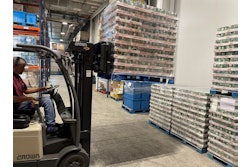Non-government consumer advocacy groups, and even internal government watchdogs, have complained especially about the approach to substances considered Generally Recognized As Safe (GRAS) in petitions to regulators, an unsuccessful lawsuit, and now even before Congress.
Now, in November, came the latest important bit of attention, a new government oversight report that analyzes FDA’s food contact approval program generally, with specific focus on Food Contact Notifications, and finds what it calls deficiencies, and recommends changes.
The report is from the Government Accountability Office (GAO), and was created with input from stakeholders inside and outside of government. The report examines the regulation of packaging materials in contact with food, and also substances used in manufacturing and transporting food.
There’s an emphasis in the report on post-market actions, that is, revisiting the safety of substances on the market that were previously found to be safe for use in contact with food. It examines the three examples of FDA stopping the use of food contact substances: per- and polyfluoroalkyl substances (PFAS), short-chain PFAS, and diphenyl ketone.
The report is focused on the substances FDA has cleared, and doesn’t encompass companies’ self-determined GRAS conclusions. Objections relating to such conclusions, including the fact that FDA isn’t aware of them, have been the subject of other proposals to change the law.
For example, there’s a bill currently under consideration in Congress that would create the Ensuring Safe and Toxic-Free Foods Act of 2022. If passed, it would instruct FDA to make revisions to its current regulations about GRAS substances such that manufacturers would have to give FDA notice of their GRAS conclusion.
It would also require the manufacturer to provide FDA with information about the cumulative effects of the substance and adequately protective safety factors in evaluating exposure to it, with particular accounting for vulnerable human populations. They’d also have to provide “information indicating that the weight of evidence shows” the substance hasn’t been found to cause cancer or reproductive or developmental toxicity (including consideration of “an endocrine mode of action”). There’s also a specific prohibition on cancer-causing substances being considered GRAS.
The new GAO report takes a deep dive into the workings of FDA’s Food Contact Notification (FCN) program, analyzing FDA data from 2000 to 2022. It notes that, since 2000, FCNs “represented about 93 percent of FDA’s total reviews resulting in food contact substances being allowed to enter the market.”
The report points out advantages that FCNs provide, namely, that the clearance they provide is company-specific, and that they have a four-month FDA review process, which is both relatively swift and is predictable. (There’s another important advantage, and that is that the law places the burden on FDA to object, if they have objections, within that four-month review period, otherwise the FCN becomes effective.)
The report’s conclusions include this: “…FDA does not have specific legal authority to compel companies to provide information on food contact substances’ safety or use for substances that are already on the market. FDA could strengthen its review process by requesting, in its required 2023 report to the House Appropriations Committee, specific authority to compel companies to provide such information and data, when directed. In addition, FDA does not track the date of the last pre- or postmarket review for all food contact substances in a way that allows FDA to readily identify substances that may warrant a postmarket review because new safety information may have emerged.”
The report recommends that FDA take these steps: “…FDA should request [from Congress] specific legal authority to compel companies to provide specific information that they have about food contact substances already on the market. FDA could do so when it submits its report to the House Appropriations Committee on options to systematically reassess the safety of food additives and obtain information on their use.” Also, “The Commissioner of FDA should direct the agency to track the dates of the last pre- and postmarket reviews for all food contact substances in a way that allows FDA to readily identify substances.”
This new GAO report is best seen as just another front in the ongoing momentum toward making some changes in how FDA regulates food contact substances, and some may well appear in coming months and years.
Yet, there’s a logical flaw in some of the long-expressed views of NGOs and others, and that is, that the fact that there are a very few examples of substances whose safety is now in question implies that the whole system is failing and needs to be changed. While some proposed changes make some sense, a full overhaul seems like an overreaction, and, thankfully, even this report isn’t calling for that.
It will be up to Congress, FDA, and industry stakeholders to hash out the correct balance among the need to protect the public health, available funds, and available personnel, and, we hope, they will consider as well whether new requirements really achieve better public protection in light of any new burdens they place on industry.
Eric Greenberg can be reached at [email protected]. Or visit his firm’s website at www.ericfgreenbergpc.com.
INFORMATIONAL ONLY, NOT LEGAL ADVICE.



























